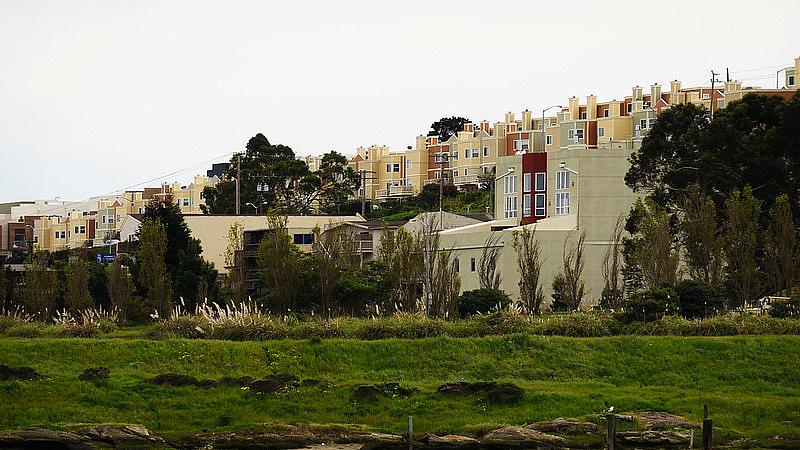Why isn’t SF doing more to maintain the public housing that so many at-risk families call home?
When the government initially launched public housing in California, their aim was to house war veterans and other working-class folks in decent, affordable housing in the San Francisco Bay Area. As public housing became stigmatized, underfunded, and racialized over the following years, however, the conditions of some of these homes gave way to inhabitable conditions.
A perfect modern-day example are the former public housing sites located in notoriously expensive and inequity-ridden San Francisco. Residents have spoken of holes in their floor and rat-infested apartments. After the federal government found the San Francisco Housing Authority possessed a $30 million deficit (since fixed), former Mayor Ed Lee demanded the authority relinquish its remaining sites and convert them into privately-owned low-income housing known as Rental Assistance Demonstration Conversion.
Fast forward to 2022, and it appears problems still persist in some public housing sites. A group of residents living in San Francisco’s historically Black Bayview neighborhood reported issue after issue regarding the state of their homes — one woman’s kitchen was completely gutted after a car crashed into her building, but no one from management fixed it for three months. Instead, they gave the elderly tenant an eviction notice. Only after I wrote an article explaining the conditions did they execute a sparkling renovation of the kitchen and drop the notice. Her neighbor asked management to address a rat infestation that was infamous among the community, and received no response. Her doctor wrote a letter citing the infestation contributed to a blood infection she caught. She died from complications to a blood infection weeks later.
As multiple studies and these last examples show, housing is one of the key social determinants of health. But there is little action to ensure these residents receive adequate living quarters. When residents in traditional non-subsidized housing begin to see an uptick in physical illness from filthy or unkempt quarters, there is an expectation that those conditions would be rectified. However, in part because of the stigmatization of public and subsidized housing and a lack of resources, these tenants face more difficult challenges when trying to receive what they deserve in a home.
Yet not only do inhabitable living conditions have a direct impact on physical health, they also compound a person’s mental health challenges. The stress of being evicted or getting harassed from management or landlord are common among residents in subsidized housing and former public housing sites, which contributes to diseases like depression or anxiety. That can make simpler tasks difficult and trigger other negative impacts in a negative feedback loop.
And unstable housing has larger impacts on both the individual and the surrounding geographical area. Some San Franciscans have expressed a desire to leave cities or counties where the only housing affordable to them is not safe to live in, according to the San Francisco Human Rights Commission, meaning a dissolution of community ties and relied-upon resources. Other times, management has attempted to evict tenants without just cause, contributing to displacement and these same types of struggles.
On a larger scale, San Francisco has endured the displacement of working class and low-income residents, particularly as the housing crisis worsens and apartments become unaffordable. As the book “Color of Law” shows, the likelihood of displacement and social inequity derives from a mixture of national housing policy and segregation that still carries over to today. Mass displacement of certain people from a neighborhood can mean less resources and advocacy for a particular group, as the book “Golden Gates” suggests, thus breaking up political and communal power — also key to ensuring a population’s health.
Again, this is compounded by the displacement of racial minority groups, who, according to “Color of Law,” were driven to live in subsidized housing through racist housing policies and actions. In San Francisco, Black residents comprise roughly 46% of the head of the city’s subsidized households, which has about 40,013 subsidized housing residents. Approximately 26% of those residents are Black, while 5% of the city’s total population is Black.
With these themes and history in mind, it’s important to hold the city of San Francisco accountable for the production and maintenance of subsidized housing. Recently, a large-scale plan called HOPE-SF has been unveiled in the southeast part of the city as a promise to rehabilitate the neglected subsidized homes. The question that needs answering, however, is how the city will avoid making mistakes of mismanagement and ensure the upkeep and dignity of tenants are sustained for years to come, instead of when the ribbon is merely cut. Learning more about the process and how to maintain subsidized housing successfully will be key to ensuring the health of tenants and the prevention of displacement from San Francisco.
I aim to answer all of these questions through my 2022 California Fellowship investigation of real-life living conditions and the management of public housing systems in a three-part series focusing on the southeast section of San Francisco.


